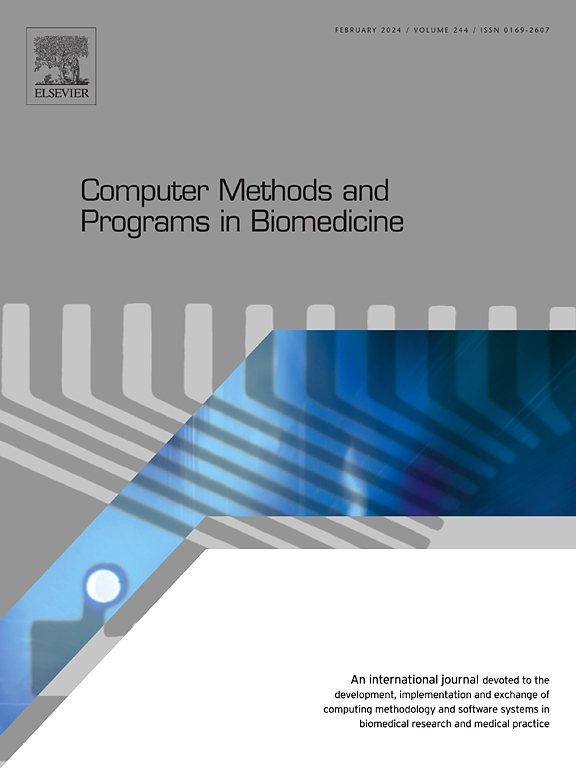Measures of spectral similarities for the detection of eye alignment during retinal birefringence scanning
IF 4.9
2区 医学
Q1 COMPUTER SCIENCE, INTERDISCIPLINARY APPLICATIONS
引用次数: 0
Abstract
Objective
Retinal birefringence scanning is a well-established method for detecting central fixation. Using this technique, binocular eye alignment is confirmed when both eyes simultaneously fixate on a small target. Central fixation is identified when the spectral power of the scanning signal returned from the retina exceeds a certain threshold at a characteristic frequency, or a combination of frequencies. Traditionally, this assessment is performed separately for each eye, with binocular fixation declared when both pass the same threshold. However, factors such as hardware asymmetries, pupil diameter variability, retinal reflectivity differences, or suboptimal eye positioning within the device's exit pupil can introduce inaccuracies in threshold-based decision-making. This pilot study explores cross-spectral methods to mitigate amplitude imbalances and improve reliability.
Methods
This research examines spectral similarities between the signals from both eyes, to establish a more robust identification of eye alignment, independent of amplitude asymmetry. Two primary techniques are proposed and tested: magnitude-squared coherence and the spectral correlation coefficient, both of which quantify spectral linkage between the eyes.
Results
Magnitude-squared coherence reliably identifies eye alignment even in systems with significant signal imbalances, providing a continuous trace from which an alignment threshold can easily be determined. The spectral correlation coefficient, while computationally faster, has a limited time resolution. Additionally, spectral traces can be re-balanced using a linear fit, enhancing visualization. An algorithm for detecting the misaligned eye is also introduced, with potential clinical relevance pending validation.
Conclusions and significance
The proposed spectral-domain techniques offer reliable measures of signal similarity for detecting eye alignment. These findings have the potential to significantly enhance the precision of decision-making in ophthalmic diagnostic devices utilizing retinal birefringence scanning. Of particular importance is their application in pediatric vision screeners, which play a crucial role in detecting strabismus (misaligned eyes) and amblyopia ("lazy eye").
求助全文
约1分钟内获得全文
求助全文
来源期刊

Computer methods and programs in biomedicine
工程技术-工程:生物医学
CiteScore
12.30
自引率
6.60%
发文量
601
审稿时长
135 days
期刊介绍:
To encourage the development of formal computing methods, and their application in biomedical research and medical practice, by illustration of fundamental principles in biomedical informatics research; to stimulate basic research into application software design; to report the state of research of biomedical information processing projects; to report new computer methodologies applied in biomedical areas; the eventual distribution of demonstrable software to avoid duplication of effort; to provide a forum for discussion and improvement of existing software; to optimize contact between national organizations and regional user groups by promoting an international exchange of information on formal methods, standards and software in biomedicine.
Computer Methods and Programs in Biomedicine covers computing methodology and software systems derived from computing science for implementation in all aspects of biomedical research and medical practice. It is designed to serve: biochemists; biologists; geneticists; immunologists; neuroscientists; pharmacologists; toxicologists; clinicians; epidemiologists; psychiatrists; psychologists; cardiologists; chemists; (radio)physicists; computer scientists; programmers and systems analysts; biomedical, clinical, electrical and other engineers; teachers of medical informatics and users of educational software.
 求助内容:
求助内容: 应助结果提醒方式:
应助结果提醒方式:


